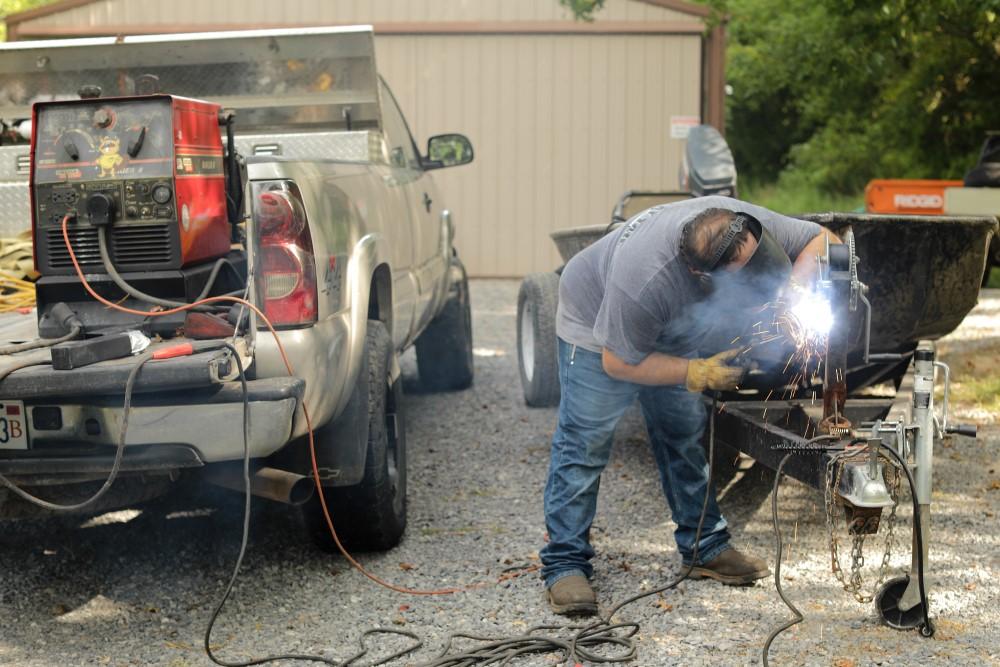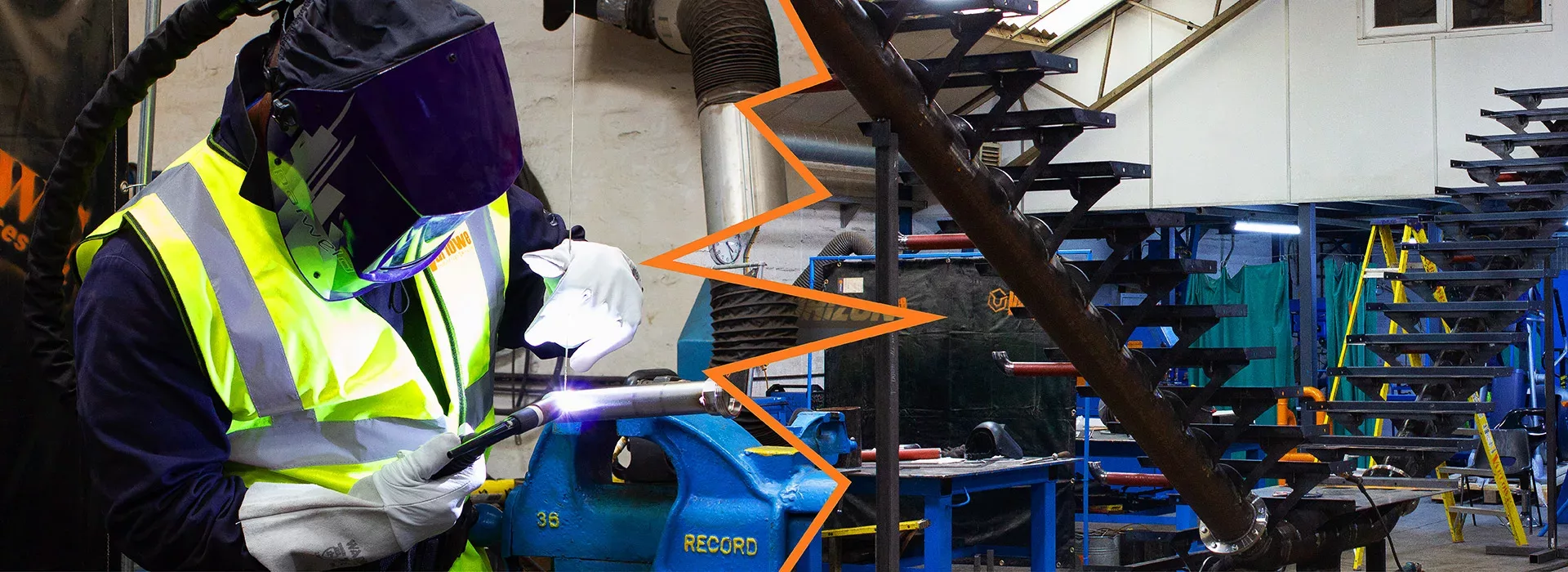Usual Welding Repair Service Issues and Exactly How to Address Them Properly
Welding fixings typically come across a range of concerns that can threaten the integrity of the end product. Usual issues include inadequate infiltration, porosity, and imbalance, among others. Each flaw presents one-of-a-kind challenges that need certain techniques for resolution. Comprehending these issues is vital for welders aiming to enhance their abilities and outcomes. This discussion will explore these typical welding fixing concerns and reliable techniques to resolve them.
Poor Infiltration
Inadequate infiltration happens when the weld metal stops working to completely fuse with the base product, causing weak joints and possible structural failings. This issue commonly comes from insufficient heat input, inaccurate electrode angle, or improper welding rate. Welders might encounter poor penetration as a result of a miscalculation of the required criteria for a particular material density or type. In addition, contamination on the base material's surface area can hinder reliable bonding, worsening the issue. To address poor penetration, welders need to assure proper settings on their devices and maintain a clean work surface area. Regular assessment of welds is suggested to recognize any type of deficiencies early, permitting prompt corrections and the avoidance of compromised architectural integrity in bonded assemblies.
Porosity
Porosity is a typical defect in bonded joints that shows up as tiny gas bubbles trapped within the weld steel. This problem can endanger the integrity of the weld, bring about lowered stamina and possible failure under anxiety. Montana Mobile Welding and Repair Welding. Porosity normally occurs from contamination, moisture, or incorrect welding strategies, which enable gases to run away into the molten weld swimming pool. To attend to porosity, welders must ensure appropriate surface area prep work, keep a tidy functioning setting, and utilize appropriate welding specifications. In addition, selecting the right filler material and securing gas can reduce gas entrapment. Routine evaluation and testing of welds can aid recognize porosity early, guaranteeing prompt rehabilitative activities are taken, thus preserving the high quality and integrity of the welded framework
Imbalance
Imbalance in welding can occur from various aspects, consisting of inappropriate configuration and thermal growth. Recognizing the source is important for reliable resolution. Numerous correction strategies are readily available to straighten elements and ensure architectural honesty.
Sources of Misalignment
Welding misalignment typically stems from a range of underlying issues that can compromise structural stability. One main cause is improper fit-up of parts before welding, which can bring about voids and uneven surface areas. Variations in thermal expansion during the welding process can likewise cause distortion, particularly if the materials being joined have various coefficients of expansion. Furthermore, poor fixturing and securing might stop working to hold components safely in position, bring about movement throughout welding. Inadequately kept tools, consisting of welding machines and devices, might introduce variances in the weld bead, more adding to imbalance. Operator error, stemming from insufficient training or experience, can also play a considerable duty in creating misaligned welds.

Improvement Techniques Offered
Attending to misalignment properly requires a mix of restorative techniques customized to the particular problems handy. One usual approach is the use of fixtures or jigs to hold parts in the appropriate position during welding, ensuring regular placement. Furthermore, preheating the products can help in reducing distortion and enhance fit-up. For considerable misalignment, mechanical realignment techniques, such as making use of hydraulic jacks or clamps, can be utilized to deal with the position before welding. Post-weld warmth treatment might additionally be necessary to alleviate stresses brought on by misalignment. Careful inspection and modification throughout the setup stage can stop imbalance concerns from becoming substantial troubles, promoting a smoother welding process and boosting overall structural stability.
Distortion
Distortion is a typical obstacle in welding that can occur from different aspects, including uneven heating & cooling. Understanding the root causes of distortion is crucial for carrying out effective prevention methods. Addressing this concern not just enhances architectural honesty but additionally enhances the overall high quality of the weld.
Root causes of Distortion
When based on the extreme warm of welding, materials typically undergo adjustments that can bring about distortion. This sensation mostly develops from thermal growth and contraction throughout the welding procedure. As the weld area warms up, the material expands; upon cooling, it gets, which can create inner stress and anxieties. On top of that, irregular home heating throughout a workpiece can intensify these stress and anxieties, causing warping or bending. The kind of product likewise plays a significant duty; metals with differing thermal conductivity and coefficients of growth may respond differently, resulting in unpredictable distortions. Additionally, poor joint style and insufficient fixturing can add to misalignment during welding, increasing the likelihood of distortion. Recognizing these causes is important for effective welding repair service and prevention strategies.
Avoidance Techniques
Reliable avoidance strategies for distortion throughout welding focus on managing warmth input and making sure correct joint design. Keeping a consistent heat input aids to reduce thermal development and contraction, which can lead to distortion. Making use of techniques such as preheating the work surface can also minimize the temperature level gradient, promoting uniform heating. Furthermore, selecting proper joint designs, such as T-joints or lap joints, can boost stability Home Page and decrease stress and anxiety focus. Carrying out appropriate fixturing to protect the work surfaces in location further help in maintaining positioning during the welding process. Lastly, staggered welding sequences can disperse warm more equally, preventing local distortion. By applying these approaches, welders can considerably decrease the probability of distortion and boost the overall high quality of their welds.
Splitting
Breaking is a common problem come across in welding repair work, frequently arising from different elements such as incorrect cooling prices, material option, or poor joint prep work. The occurrence of cracks can greatly endanger the stability of the weld, causing prospective failures during operation. To welding hoods address this concern, welders must initially evaluate the origin, ensuring that materials are suitable and properly picked for the certain application. In addition, regulating the air conditioning price during the welding process is necessary; fast air conditioning can generate tension and bring about breaking. Proper joint design and prep work additionally add to reducing the danger. Applying these techniques can enhance weld high quality and sturdiness, inevitably minimizing the likelihood of fracturing in ended up weldments.

Incomplete Blend
A considerable problem in welding repairs is insufficient fusion, which occurs when the weld steel does not sufficiently bond with the base material or previous weld passes - Montana Mobile Welding and Repair Welding. This flaw can bring about weak points in the joint, possibly compromising the integrity of the welded structure. Variables contributing to insufficient blend include not enough warm input, inappropriate welding strategy, and contamination of the surfaces being signed up with. To address this concern effectively, welders must guarantee appropriate pre-weld cleaning and surface prep work, as well as change their welding criteria to attain adequate penetration and combination. Regular assessment throughout the welding procedure can likewise help determine insufficient fusion early, permitting timely restorative steps to boost the total quality of the weld
Overheating
While welding fixings can enhance structural stability, overheating provides a substantial difficulty that can cause material destruction. Extreme heat during welding can change the mechanical residential or commercial properties of steels, leading to decreased toughness, increased brittleness, and warping. This sensation is especially crucial in high-stress applications where structural dependability is extremely important. Recognizing overheating can entail aesthetic evaluations for discoloration or distortion, as well as keeping an eye on temperature level throughout the welding process. To mitigate the threats related to getting too hot, welders must utilize ideal techniques, such as managing warm input, adjusting traveling rate, and making use of suitable filler materials. Additionally, carrying out pre- and post-weld warmth treatments can help restore product properties and enhance the overall high quality of a knockout post the fixing, making certain long-lasting efficiency and safety.
Frequently Asked Questions
What Are the Common Indicators of a Welding Issue?

How Can I Check My Welds for Quality?
To evaluate welds for top quality, one can make use of visual examinations, ultrasonic screening, and radiographic methods. Each strategy assures structural integrity, recognizes defects, and confirms adherence to specified standards, eventually improving the integrity of the welded joints.
What Safety Preventative Measures Should I Take While Welding?
When welding, one ought to prioritize safety by using appropriate personal safety equipment, making certain correct air flow, safeguarding combustible products away, preserving a clean workspace, and being aware of environments to stop injuries and mishaps.
Can I Fix a Weld Without Remodeling the Entire Joint?
Fixing a weld without redesigning the whole joint is feasible, depending upon the damages (Montana Mobile Welding and Repair Welding). Techniques such as grinding, adding filler material, or using a welding process can efficiently deal with particular imperfections while preserving the bordering structure
What Equipment Are Important for Effective Welding Repairs?
Necessary devices for efficient welding repairs include a welding machine, cable brush, grinder, protective gear, clamps, and filler products. Each tool plays a vital duty in guaranteeing high quality and security throughout the repair work procedure. Porosity typically develops from contamination, wetness, or incorrect welding strategies, which allow gases to run away into the liquified weld swimming pool. Badly conserved equipment, including welding devices and devices, might present disparities in the weld grain, further adding to imbalance. When subjected to the extreme heat of welding, products typically go through adjustments that can lead to distortion. Splitting is a typical concern run into in welding repair services, frequently resulting from various elements such as improper cooling rates, material choice, or poor joint preparation. A significant problem in welding fixings is incomplete combination, which takes place when the weld metal does not properly bond with the base material or previous weld passes.
Comments on “Repairing cracking in welded joints: tips from Montana Mobile Welding and Repair Fabrication”